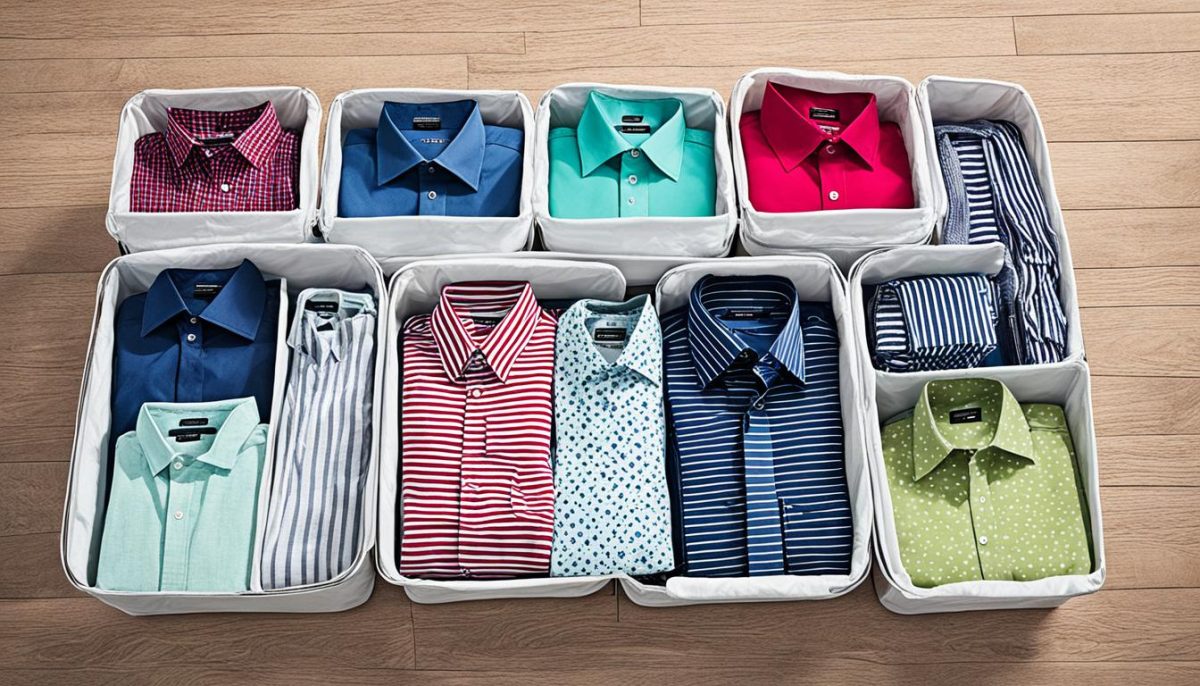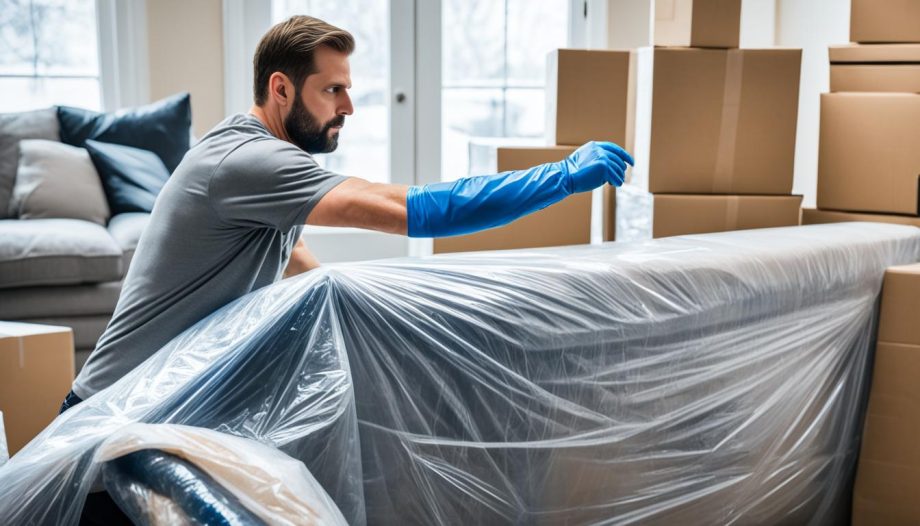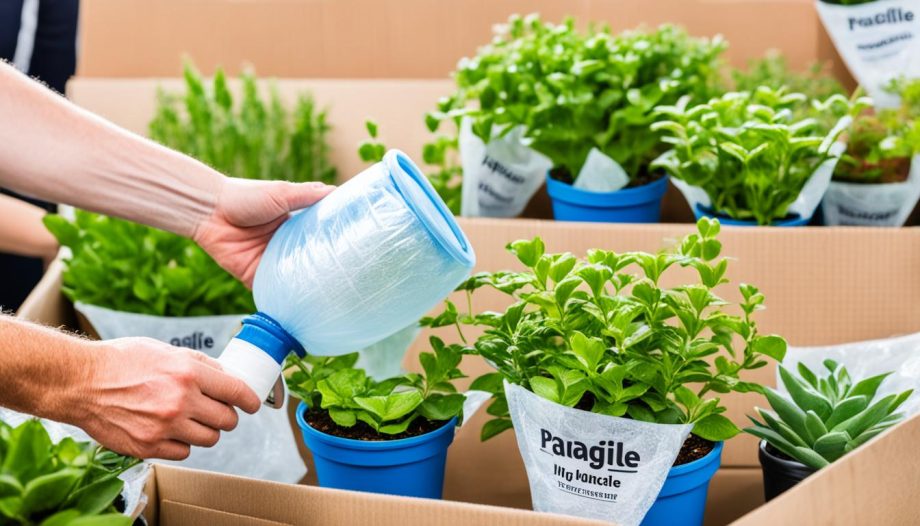Are you getting ready for a big move? Packing clothes can be a daunting task, but with the right techniques, you can streamline the process and ensure that your clothes arrive at your new home in the best condition. In this section, we will provide expert tips and efficient packing techniques to help you pack your clothes for moving.
By following our step-by-step guide, you’ll not only minimize the hassle of unpacking but also save time and effort during the relocation process. Whether you’re moving across town or to a new city, these expert tips will help you pack your clothes efficiently and protect them along the way.
From sorting and decluttering your wardrobe to organizing your clothes for packing, we’ll cover everything you need to know. We’ll also share packing strategies and techniques that will help you maximize space and protect delicate fabrics. Plus, we’ll provide insights on how to label and pack your clothes boxes to make unpacking a breeze.
So, if you’re ready to make your moving experience smoother and more organized, read on for expert tips and efficient packing techniques that will streamline your clothes packing process.
Sorting and Decluttering Your Wardrobe
Before you start packing for your move, take the time to sort through your wardrobe and declutter. It’s an essential step that will save you time and energy when packing your clothes. By assessing each item of clothing, you can make decisions on what to keep, donate, sell, or discard.
Sorting and decluttering your wardrobe has multiple benefits. Firstly, it allows you to minimize the number of clothes you bring with you, reducing the overall moving load. This not only makes the moving process more efficient but also saves you money on moving expenses if you’re charged by weight or size.
Additionally, decluttering your wardrobe can help you create a fresh start in your new home. Clearing out items you no longer wear or need can be liberating and make your new space feel more organized and inviting.
To begin the sorting process, take each item of clothing and ask yourself if you’ve worn it in the past year. If the answer is no, consider letting it go. You can donate clothes that are in good condition to local charities, sell valuable or designer items to consignment stores or online platforms, or simply discard items that are worn out or damaged beyond repair.
It’s important to be realistic and avoid holding on to clothes just because of sentimental attachment or the possibility of wearing them in the future. Minimizing your wardrobe can help you create a curated collection of clothing that truly reflects your style and makes getting ready each day a breeze.
Once you’ve determined which items to keep, consider organizing your clothes by category, such as tops, bottoms, dresses, and outerwear. This will make it easier to pack and unpack later on. You can also consider using storage solutions such as hanging organizers or drawer dividers to optimize your wardrobe space.
Tips for Efficient Sorting and Decluttering:
- Set aside dedicated time for this task to ensure you can focus and make thoughtful decisions.
- Create a sorting system with labeled bags or boxes for different destinations (keep, donate, sell, discard).
- Ask yourself practical questions about each item: Does it fit well? Is it still in good condition? Does it align with your current style?
- If you’re unsure about an item, try it on to see how it looks and feels. If it doesn’t make you feel confident or comfortable, it’s probably best to let it go.
- Consider the climate and lifestyle of your new location. Will you still need those heavy winter coats or formal attire?
Sorting and decluttering your wardrobe is an important step in preparing for a move. By minimizing the number of clothes you bring with you, you can reduce the moving load and make the packing process more manageable. Plus, starting fresh in your new home with a curated wardrobe can provide a sense of renewal.

Organizing Clothes for Packing
Once you have sorted and decluttered your clothes, it’s important to organize them properly for packing. This will not only make the packing process more efficient but also help protect your garments during transit. Here are some effective packing strategies and techniques to consider:
Folding and Rolling
One of the most common ways to organize clothes for packing is by folding them. This method works well for items like t-shirts, jeans, and sweaters. Start by laying the garment flat and fold it neatly into a compact square or rectangle. This technique helps maximize space in your boxes and keeps your clothes from becoming wrinkled during the move.
Another option is rolling your clothes. This is especially useful for items like t-shirts, lightweight dresses, and workout clothes. Rolling not only saves space but also minimizes wrinkles. Simply lay the garment flat, fold in any sleeves, and roll it tightly from one end to the other. This method is great for packing smaller items and underwear.
Using Vacuum-Sealed Bags
If you’re looking to optimize space and protect delicate fabrics, consider using vacuum-sealed bags. These airtight bags can compress your clothes, reducing their volume by up to 80%. Simply place your garments inside the bag, seal it, and use a vacuum cleaner to remove the air. Vacuum-sealed bags are particularly useful for packing bulky items like winter coats, comforters, and pillows. Just make sure not to overfill the bags, as it can lead to excessive wrinkling.

Protecting Delicate Fabrics
When it comes to delicate fabrics like silk, lace, or cashmere, it’s essential to take extra care during packing. To protect these fragile items, consider using acid-free tissue paper. Place a layer of tissue paper between each folded garment to prevent friction and potential damage. This will help preserve the integrity of delicate fabrics and keep them in optimal condition.
Additionally, you can invest in garment bags for your formalwear or special occasion outfits. These breathable bags provide an extra layer of protection against dust, humidity, and potential snags. Hang your delicate garments inside the garment bags before placing them in suitable moving boxes. This way, they will remain wrinkle-free and well-protected throughout the moving process.
By following these packing strategies and techniques, you can efficiently organize your clothes for moving and ensure they arrive at your new home in great condition. Remember, taking the time to organize and protect your garments during packing will save you precious time and effort when it’s time to unpack and settle into your new space.
Labeling and Packing Boxes
When it comes to streamlining your move and ensuring an efficient unpacking process, labeling and packing your clothes boxes strategically is key. By following our expert tips, you can easily locate specific clothing items once you’ve moved into your new home.
Start by labeling each box accurately. Use descriptive labels such as “winter sweaters” or “summer dresses” to make it easier to identify what’s inside without having to open every box. Consider color-coding your labels for even greater organization.
In addition to labeling, employ packing tips that optimize space and protect your clothes from damage. Roll your socks and tuck them inside shoes to save space. Stuff your hats with soft items to maintain their shape. These simple techniques can make a significant difference in maximizing your available packing space.
Efficient unpacking starts with efficient packing. By labeling your boxes and utilizing these packing tips, you’ll ensure a smooth transition into your new home. So, pack your clothes with confidence, knowing that an organized and stress-free unpacking awaits!




